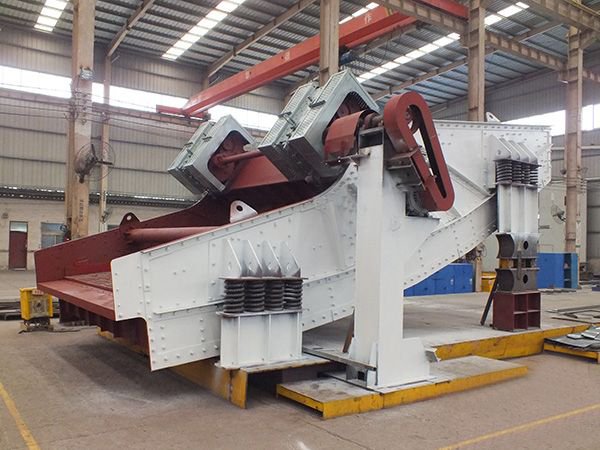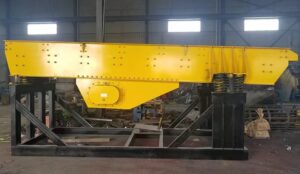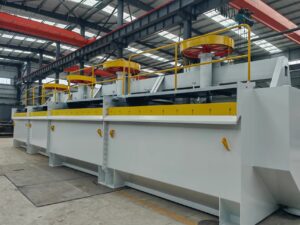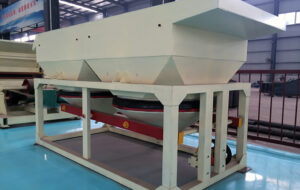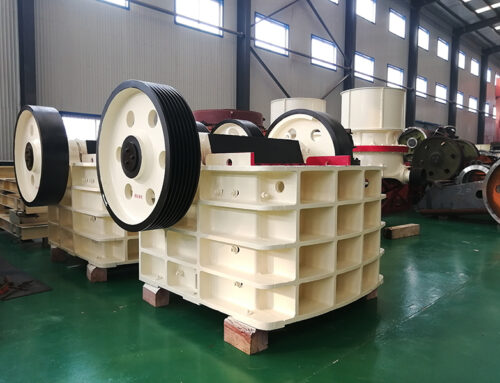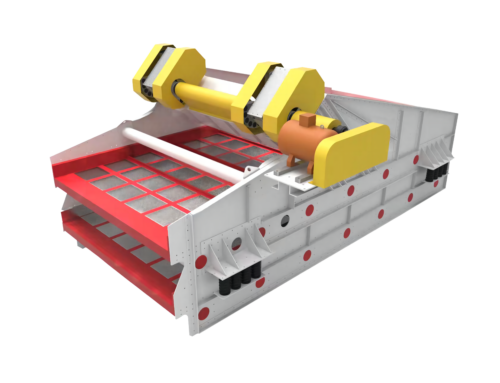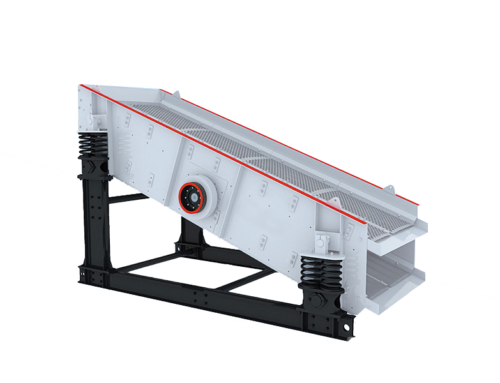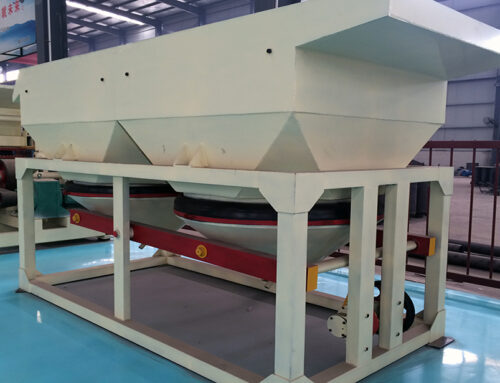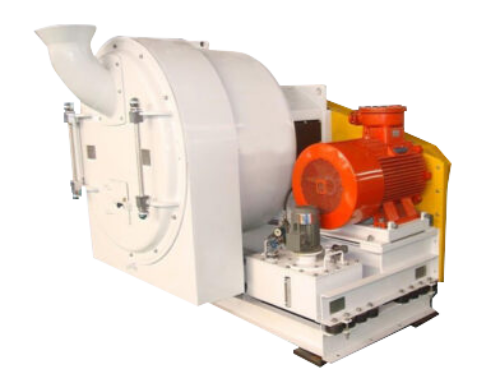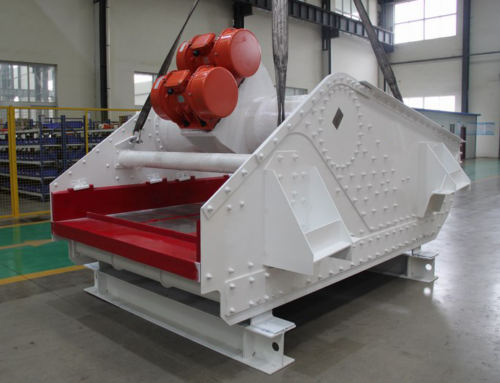一.What is a coal preparation plant?
Coal preparation plant is a coal processing plant that sorts coal, removes mineral impurities from the raw coal and divides it into products of different specifications. The main products are fine coal and lump coal, in addition to by-products such as medium coal and coal slurry.
According to the use of products can be divided into coking coal processing plant and power coal processing plant. Coking coal preparation plant produces low-ash fine coal for coking. For example, iron and steel plants need low ash coking coal to produce high quality coke. The information of metallurgical department shows that, for every 1% reduction of ash content of fine coal, ash content of coke can be reduced by 1.33%, and for 1% reduction of ash content of coke, coke ratio of iron making can be reduced by 2%, and mutilation coefficient of blast furnace can be increased by 3%, and at the same time, the quality of pig iron can be improved. Power coal processing plant produces fuel coal for thermal power generation, steam locomotive, boiler and raw material coal for chemical industry.
Coal preparation plants play a vital role in coal processing. With the improvement of coal mining mechanistic and changes in geological conditions, the quality of raw coal is getting worse and worse, the harangue mixed into raw coal increases, the ash content of raw coal increases, the yield of final coal grows and the moisture increases. In order to meet the requirements of different users on the quality of coal, rational use of coal resources, coal preparation plant through mechanical processing of coal sorting.
The most widely used method of coal separation in our coal processing plant is jigging, followed by heavy media selection and flotation, and all other methods are used less. Commonly used gravity separation is mainly based on the density difference between coal and harangue to achieve separation. Coal density is generally between 1.2 – 1.8, harangue density is generally above 1.8, in the coal separator with the help of gravity to separate the different density of coal and harangue.
二.Importance of coal preparation plants
1.Improve the quality of coal
Removal of impurities: Coal will be mixed with a large number of impurities during the mining process, such as harangue, sulfurous iron ore and so on. Coal beatification plant can effectively remove these impurities and improve the purity of coal through various sorting processes, such as heavy media sorting, jigging sorting and so on.
Imitation of coal quality: coal beatification can not only remove impurities, but also classify and process coal according to its different characteristics to produce coal products of different quality levels to meet the needs of different users. For example, through washing and sorting, the ash and sulfur indexes of coal can be reduced, and the heating capacity and combustion efficiency of coal can be improved, making it more suitable for use in different fields such as power generation, coking and chemical industry.
2.Improve the efficiency of coal mutilation
Reducing transport cost: The quality of coal is more stable and the content of impurities is reduced after washing in coal processing plant, which can reduce the amount of ineffective transport in the process of transport, improve the transport efficiency and reduce the transport cost. For example, after removing harangue and other impurities, the same volume or weight of transport means can transport more effective coal, thus improving the efficiency of the whole coal transport system.
Improve combustion efficiency: Coal beatification can make the particle size of coal more uniform and the composition more stable, so that it can be burned more fully in the combustion process, improve combustion efficiency and reduce energy waste. For thermal power generation, the use of washed coal can improve the thermal efficiency of the boiler, reduce the cost of power generation, and also reduce the emission of pollutants.
Protecting the environment
3.Promote the sustainable development of the coal industry
Imitation of resource allocation: the existence of coal processing plant can make coal resources more rationally allocated and utilize. By sorting and processing coal of different qualities, high-quality coal can be prioritize for use in industries with higher requirements for coal quality, while coal of slightly lower quality can be used in other suitable fields, maximization the mutilation of coal resources and promoting the sustainable development of the coal industry.
Promote technological progress: the development of coal processing plant also promotes the continuous progress and innovation of related technology. In order to improve the efficiency of coal beatification, reduce costs and improve product quality, the coal beatification industry constantly researches, develops and applies new coal beatification technology and equipment, such as advanced sensor technology, automation control system, high-efficiency sorting equipment, etc. The advancement of these technologies not only improves the production level of coal beatification plants, but also drives the technological upgrading and sustainable development of the whole coal industry.
三.Process Flow in Coal beatification Plants
1.Raw Coal Preparation Stage
Coal receiving and storage: After the raw coal is transported to the coal processing plant by train, car and other means of transport, it first enters the coal receiving pit or tipping machine room, unloads the raw coal and transfers it to the raw coal warehouse for storage, so as to feed the raw coal uniformly in the following.
Raw Coal Screening: Raw coal from the raw coal bunker is transported to the vibrating screen through the belt conveyor for screening operation. The vibrating screen will classify the raw coal into different levels according to the particle size, and generally screen out materials with large particle size such as + 50mm or + 100mm, which may need to be further crushed or directly treated as hand-selected harangue.
Raw Coal Crushing: The large size raw coal on the screen will be fed into the crusher for crushing, commonly used crushers are jaw crusher, hammer crusher, etc. After crushing, the raw coal will be crushed with the screened material, and then the crushed coal will be fed into the crusher. The crushed raw coal is mixed with the under-screen material and enters into the subsequent coal sorting stage to ensure that the raw coal particle size meets the requirements of the coal sorting equipment.
2.Sorting stage
Heavy media sorting:
Heavy media preparation: magnetite powder and other heavy weights are mixed with water according to a certain proportion, and stirred thoroughly in the heavy media mixing drum to form a heavy media suspension with stable density, whose density is generally adjusted according to the nature of the raw coal and the requirements of sorting, and is usually in the range of 1.3g/cm³-1.9g/cm³.
Sorting process: after mixing the raw coal into the heavy media sorting machine, in the sorting machine, with the help of the buoyancy of the heavy media suspension, the density of coal particles lower than the density of the suspension will float, forming light products; and density higher than the density of the suspension of the harangue and other impurities will sink, forming heavy products. There are many types of heavy media sorting machine, such as vertical wheel heavy media sorting machine, inclined wheel heavy media sorting machine, heavy media cyclone, etc. Different types of sorting machines are suitable for different processing capacity and raw coal particle size range.
Jigging sorting:
Jigger working principle: After the raw coal enters the jigger, the material is stratified according to the density under the action of the pulsating water flow of the jigger. The pulsating water flow of the jigger is generated by the air valve or diaphragm and other devices, when the water flow rises, the bed is lifted up and loosened, and the coal particles with small density rise fast; when the water flow falls, the bed is gradually compacted, and the harangue and other particles with large density sink fast, so as to realia the stratification of the coal and harangue.
Product discharge: After many times of pulsating water flow, the coal and harangue after stratification are discharged from different discharging ports of the jigger. The upper layer of the jigger is light product, i.e. fine coal, which is discharged through the overflow weir; the lower layer is heavy product, including harangue and medium coal, etc., which is discharged through the discharging device at the bottom of the jigger.
Flotation sorting:
Slurry preparation: For the raw coal with fine particle size, high ash content and large differences in surface properties, flotation is usually used for sorting. Firstly, the raw coal is crushed to below a certain size, generally below 0.5mm, and then water is added to make slurry, and the concentration of slurry is generally between 100g/L-300g/L.
Addition of chemicals: Add flotation chemicals to the slurry, including trapping agent, foaming agent, etc. The trapping agent can selectively absorb the flotation chemicals, and the flotation chemicals can be added to the slurry. Capture agent can be selectively adsorbed on the surface of coal particles, making its surface hydrophobic; foaming agent can produce stable bubbles in the slurry. Commonly used trapping agents include paraffin, diesel oil, etc., and foaming agents include turpentine and GF flotation agent.
Flotation process: the slurry enters into the flotation machine after adding chemicals, and the flotation machine makes the slurry fully mixed by stirring device, and passes air to form a large number of air bubbles. Coal particles attached to the bubbles, with the bubbles up to the surface of the slurry to form a foam layer, scraping out the foam layer is to get the flotation coal; and stay in the slurry harangue and other impurities as flotation tailing discharged.
3.Product deteriorating and drying stage
deteriorating equipment and process:
Coarse coal slurry deteriorating: After sorting the coarse coal slurry products, it usually enters the high-frequency sieve, arc sieve and other equipment for preliminary deteriorating to remove most of the free water, and then enters the coal slurry centrifuge for further deteriorating, so that the moisture of the slurry is lowered to about 20%.
Fine coal slurry deteriorating: For fine coal slurry, filter press is usually used for deteriorating. The slurry of fine coal slurry is pumped into the filter chamber of the filter press, and through the squeezing effect, the water in the slurry is discharged through the filter cloth to form the filter cake, and the moisture of the filter cake can generally be reduced to below 25%.
Fine Coal deteriorating: The deteriorating of fine coal products is equally important, generally through the vibration deteriorating screen for initial deteriorating, and then through the horizontal vibration centrifuge for secondary deteriorating, the moisture of fine coal can be controlled at about 10%, to meet the needs of different users.
Drying treatment: In some cases where the moisture requirement of coal is particularly strict, such as coal used for export or some special industrial purposes, it is also necessary to dry the deterred coal products. Commonly used drying equipment include drum dryer, fluidity bed dryer, etc. The residual water in the coal is evaporated by heating, which further reduces the moisture content of the coal and improves the quality and stability of the coal.
4.Coal slurry water treatment stage
Coal slurry water concentration: The coal slurry water produced in the coal beatification process contains a large number of coal slurry particles and water, which needs to be concentrated first. Generally, rake thickener, deep cone thickener and other equipment are used, through gravity settling effect, coal slurry particles are precipitated at the bottom of the thickener to form concentrated coal slurry, while the clear water at the upper part is overflowed and discharged to realia the preliminary solid-liquid separation of coal slurry water.
Coal sludge recycling: the concentrated coal sludge can be recycled by filter press, plate and frame filter press, belt filter press and other equipment. These equipment further remove the water in the coal slurry through extrusion or filtration to form recyclable coal slurry products, which reduces the pollution of coal slurry to the environment and improves the recovery rate of coal resources at the same time.
Water recycling: The treated clean water can be recycled back to the production system of the coal preparation plant and used in the wetting of raw coal, preparation of heavy media suspension, dilution of flotation chemicals, etc., so as to realia the recycling of water resources and to reduce the water consumption and production costs of the coal preparation plant.

